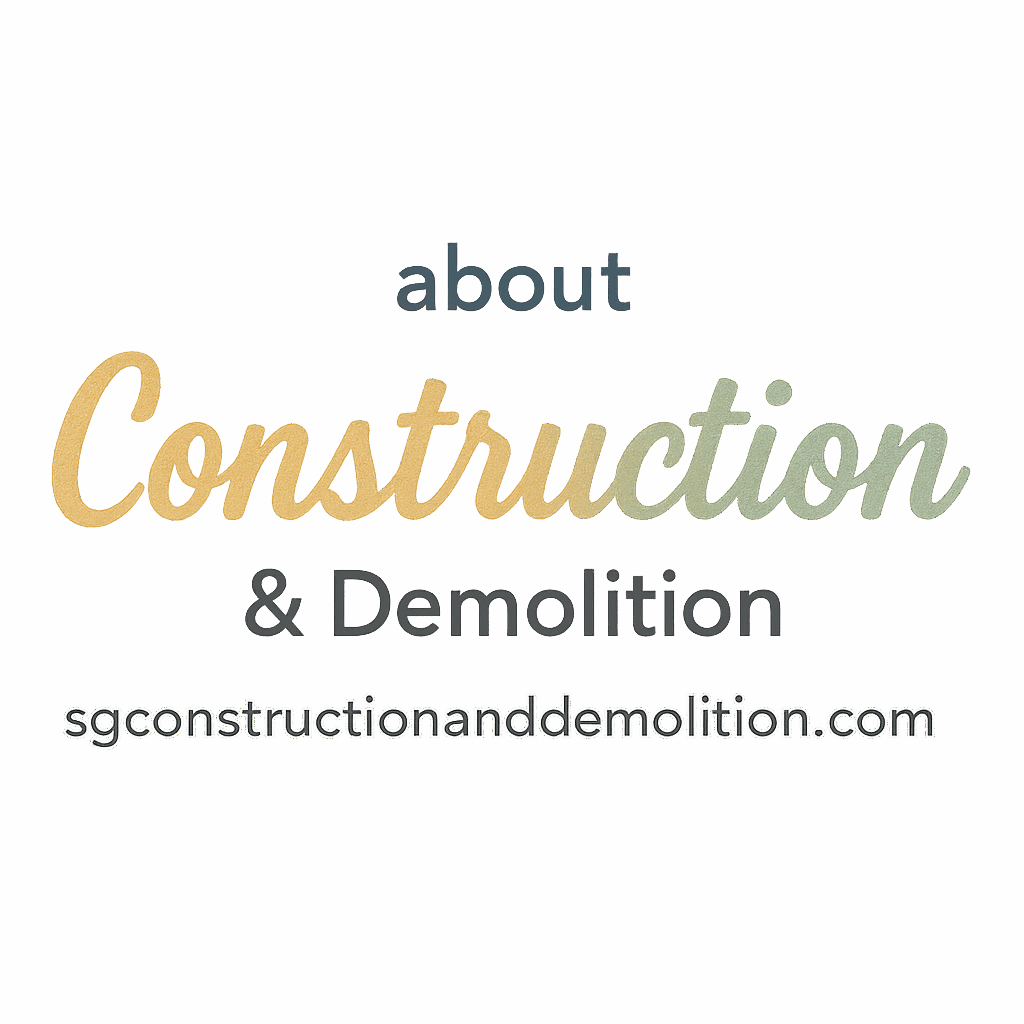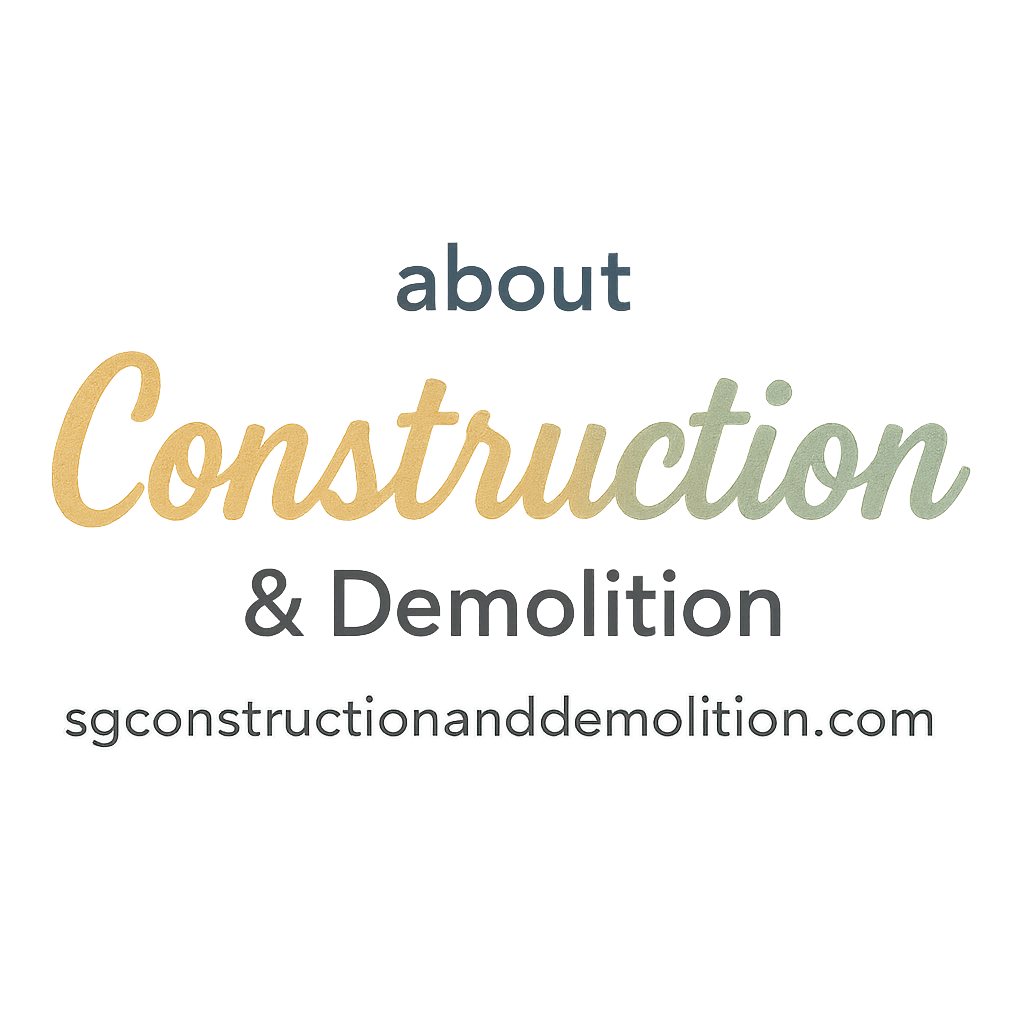Introduction
Demolition might look like chaos from the outside—dust clouds, heavy machinery, buildings crashing down—but behind the scenes, it’s a highly regulated process. Whether you’re taking down a shed or clearing a massive commercial site, there are several legal requirements you must meet before even swinging that wrecking ball.
So, before you power up the excavator or grab a sledgehammer, let’s walk through the 7 legal requirements for demolition in construction. Missing even one of these steps could lead to serious fines, delays, or even lawsuits. Let’s keep it safe, smart, and legal.
1. Pre-Demolition Planning and Safety Assessments
Importance of Proper Planning
Before anything gets demolished, you need a comprehensive demolition plan. This plan covers everything—from how the structure will be brought down to how the debris will be handled. It’s not just good practice—it’s the law in many regions.
Demolition planning helps you identify structural risks, hazardous materials, and the right equipment for the job. Skipping this step is like heading into battle with no strategy.
Want to get a head start? Check out Planning & Safety for expert tips and checklists.
2. Permits and Approvals
Types of Permits Needed
One of the most critical legal steps in demolition is securing the proper permits. Depending on your local laws, you may need:
- Demolition permits
- Asbestos removal permits
- Noise control approvals
- Road or sidewalk closure permits
Failing to get permits can not only halt your project—it can leave you open to penalties or lawsuits.
Dealing with Local Authorities
Every city or municipality has its own rules. Always consult your local building department before beginning demolition. They’ll help you figure out exactly what documents and inspections are required. Some may even demand engineered drawings or a historical review for older buildings.
If you’re just starting out, visit Construction Basics to understand how construction and demolition permitting works from the ground up.
3. Environmental Regulations and Waste Management
Handling Hazardous Materials
Demolition isn’t just about bricks and steel—it can involve lead paint, asbestos, mold, and other hazardous substances. You’re legally obligated to test for and remove these before beginning work.
There are strict environmental laws around how this waste is managed. You’ll need to file proper reports, hire licensed hazardous waste haulers, and use EPA-approved landfills.
Green Demolition Practices
Modern demolition practices are shifting toward eco-friendly solutions. Green demolition involves recycling materials like metal, wood, and concrete instead of sending them straight to the dump.
Explore more on this sustainable trend at Green Smart Trends.

4. Utility Disconnections
Shutting Down Water, Gas, and Electricity
This might seem like a no-brainer, but you’d be shocked how many contractors overlook this step. Before any physical demolition begins, all utilities must be safely disconnected.
This includes:
- Water
- Electricity
- Natural gas
- Sewer connections
- Internet/cable services
Internal Link: Electric & Power Tools
Working around live wires or gas lines is a recipe for disaster. For safe tool usage during demolition, head over to Tools & Equipment and check out the latest in Electric and Power Tools.
5. Asbestos and Hazardous Substance Compliance
Legal Requirements for Asbestos Handling
Older buildings—especially those built before the 1980s—may contain asbestos. Federal and state laws mandate that you:
- Conduct asbestos surveys before demolition
- Use licensed abatement professionals
- Notify environmental agencies
You can’t just rip out asbestos and toss it in a dumpster. It needs to be sealed, labeled, and transported under strict guidelines.
Proper Disposal Methods
When it comes to demolition, you are legally responsible for every bit of debris, including dangerous materials. Keep disposal logs, use approved landfills, and document everything for inspection purposes.
To stay up-to-date, review the Demolition Techniques page for compliant methods that meet legal standards.
6. Noise, Dust, and Public Safety Controls
Community Notification and Public Access
Most local laws require you to inform nearby residents or businesses before demolition starts—especially if it involves large buildings or high-decibel equipment.
Make sure to:
- Post signs around the perimeter
- Send notices to neighbors
- Limit demolition to specific hours
Monitoring Emissions and Debris
Airborne particles, debris, and noise aren’t just annoying—they can be hazardous. You may need to:
- Use dust suppression systems (like water sprayers)
- Put up fencing or netting
- Limit working hours to reduce disruption
If you’re unsure about your responsibilities here, the Planning Safety section is your best friend.
7. Compliance with Demolition Techniques and Methods
Legal Techniques for Structural Demolition
Different structures require different takedown methods—manual demolition, implosion, mechanical, or deconstruction. You can’t just choose what’s fastest or cheapest. Certain techniques are restricted or banned based on safety and zoning laws.
Using an illegal or non-compliant technique could put you on the wrong end of a court case—and fast.
For full coverage of accepted methods, browse the expert advice on Demolition Techniques and filter by Methods.
Conclusion
Demolition isn’t just about knocking things down—it’s about doing it legally, safely, and smartly. By following these 7 legal requirements for demolition in construction, you’ll avoid penalties, protect your team, and respect your community and the environment.
Whether you’re a contractor, developer, or homeowner, ticking these boxes keeps your project on track—and your reputation intact. Want more demolition and construction tips? Start exploring the wealth of guides and resources on SG Construction and Demolition.
FAQs
1. What permits are needed for demolition?
You’ll typically need a demolition permit, environmental clearance (like asbestos), and utility disconnect documentation. Check with your local building department for specifics.
2. Can demolition start without utility disconnection?
No. All utilities—water, gas, electricity—must be disconnected before demolition begins to avoid serious safety risks and legal violations.
3. Is asbestos always found in old buildings?
Not always, but structures built before the 1980s often contain asbestos. A certified asbestos inspection is legally required before demo starts.
4. Who regulates noise levels in demolition?
Local city ordinances usually set permissible noise levels and working hours. You may need to apply for a noise variance if working outside those limits.
5. How is green demolition different from traditional demolition?
Green demolition focuses on recycling and reusing materials, reducing landfill waste, and minimizing environmental impact. Learn more at Green Smart Trends.
6. What happens if you ignore safety planning?
You risk injury, project shutdowns, and legal penalties. Planning isn’t optional—it’s a required first step in any demolition job.
7. Can homeowners do demolition themselves legally?
In some cases, yes—but only for small, non-structural projects. For anything larger, you’ll need permits, safety gear, and possibly licensed professionals depending on local law. Check out the Beginners tag for tips.


